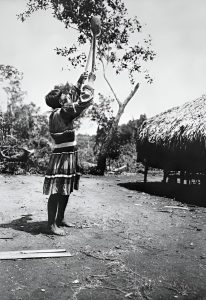Since 1990, Native American Heritage Month has been nationally observed in November to commemorate the vast culture, traditions and achievements of our nation’s First Peoples. Pre-Columbian period, there were estimated to be over 1,000 thriving Indigenous civilizations within the United States or Turtle Island (the term for North America derived from a creation story common to several Indigenous nations of the Northeastern Woodlands). According to the Bureau of Indian Affairs, there are currently 575 nationally recognized as of 2023. Here are some things you may not have known about these culturally rich communities.
Honoring Names
The National Museum of the American Indian notes that it's best to use individual tribal names when possible. Recognizing tribal affiliation is one way to honor our nation's rich Indigenous cultures. When in doubt, ask what term or tribe name is preferred. Florida is home to two federally recognized Indigenous communities: The Seminole and Miccosukee tribes. Their names are well-known and are both culturally rich groups with historic customs and traditions that are practiced to this day. Take a trip to the Ah-Tah-Thi-Ti-Ki Museum (Official Museum of the Seminole Tribe) located on the Big Cypress reservation in the heart of the Everglades to learn more!
Societal Impact
The imprint and foundation that Indigenous people have established are ingrained and woven throughout our society. As experts and caretakers of the land, they developed sustainable farming techniques such as “Three Sisters Planting” or Companion Planting which are used today. They are also great orators and storytellers who preserved culture, religion and language through generations. We honor their perseverance through dark periods of erasure such as the Trail of Tears, forced relocation and Indian boarding schools.
Black-Indegenous & Afro-Indegenous
Furthermore, we acknowledge the unique, complex relationship of our Afro-Indigenous community and Black-Indigenous connections, a history that has been largely overlooked. Enslaved African Americans and Indigenous peoples who were captured or enslaved formed alliances and relationships with each other on their quest for freedom and their paths would even be intertwined on the Underground Railroad. The Seminole tribe in Florida is one of the most visible of such relationships. Black Seminoles, also called Seminole Maroons or Seminole Freedmen, were a group of free African Americans and runaway slaves that joined forces with the Seminole Indians in Florida from approx. 1700 through the 1850s. The Black Seminoles were celebrated for their bravery during the three Seminole Wars.
To learn more, please attend our virtual event, “Celebrate Native American Heritage Month: Highlighting Afro-Indigenous Voices” on Nov.9th at 4 pm.
Readings:
An Afro-Indigenous History of the United States
50 Events That Shaped American Indian History
Sources
https://americanindian.si.edu/nk360/informational/storytelling-and-oral-traditions
https://www.fieldmuseum.org/blog/relevance-native-america-black-history
https://www.aspeninstitute.org/blog-posts/what-it-means-to-be-both-black-and-indigenous/
https://historynewsnetwork.org/article/173041




